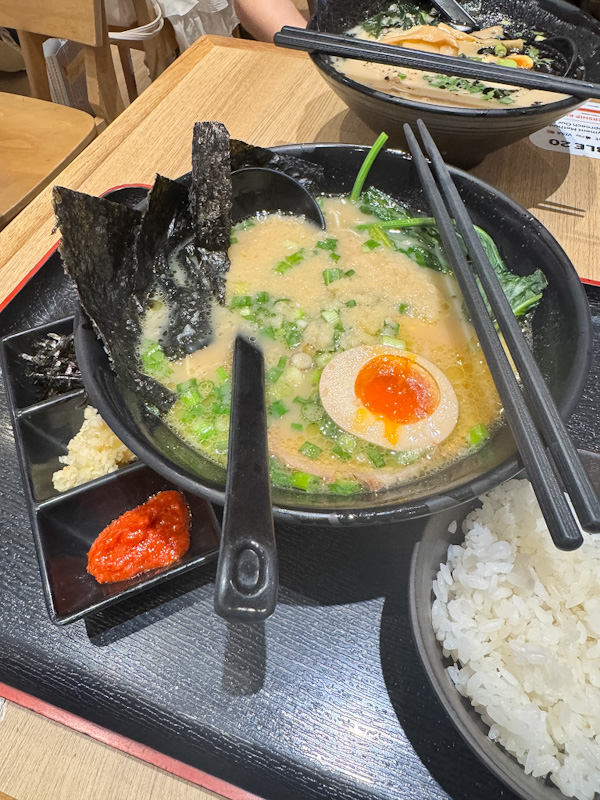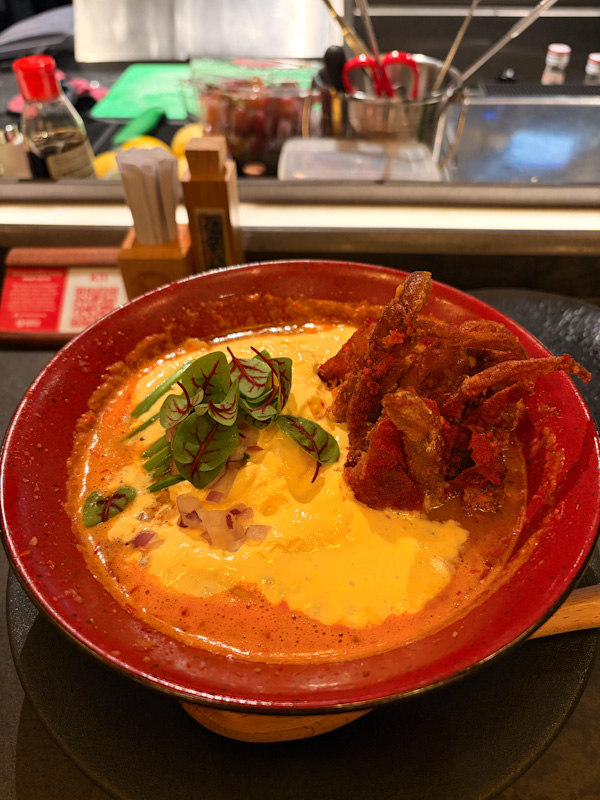WHAT WE ATE
- Saga Ariake Ramen – 75/100, Saga
- White Tonkotsu Ramen – 70/100, Saga
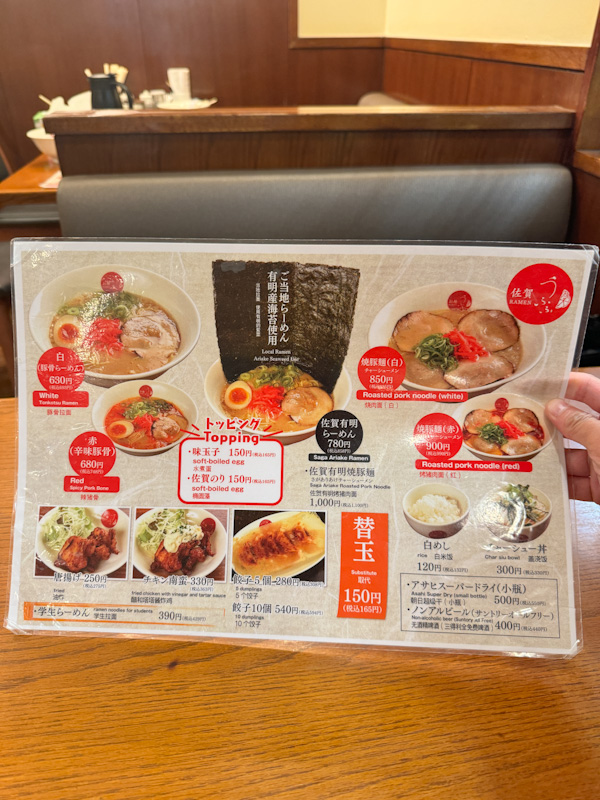
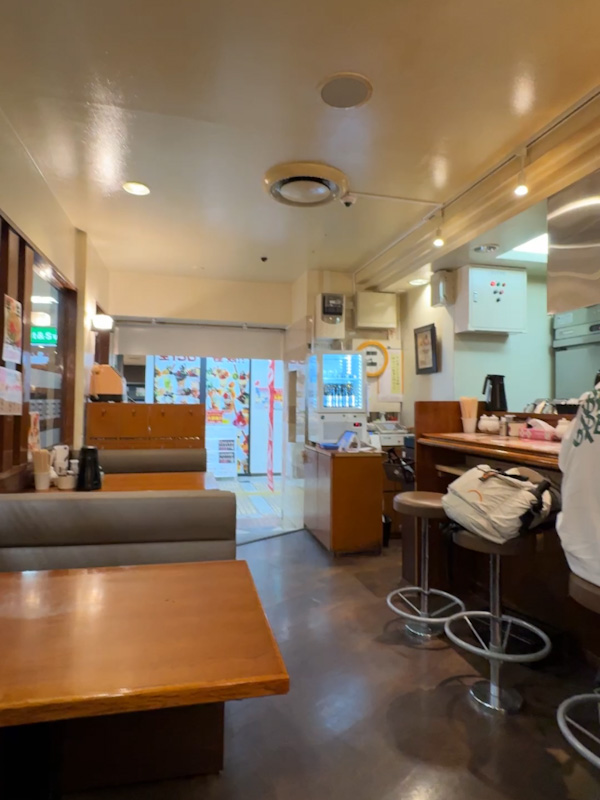
Hidden near the end of the food and shop alley in Saga train station is an unassuming ramen shop called Saga Ramen Ufufu. With huge signboards advertising student discounts, it effectively draws in students even outside of lunch hours. This cozy spot has become a popular hangout for young diners looking for a budget-friendly meal.

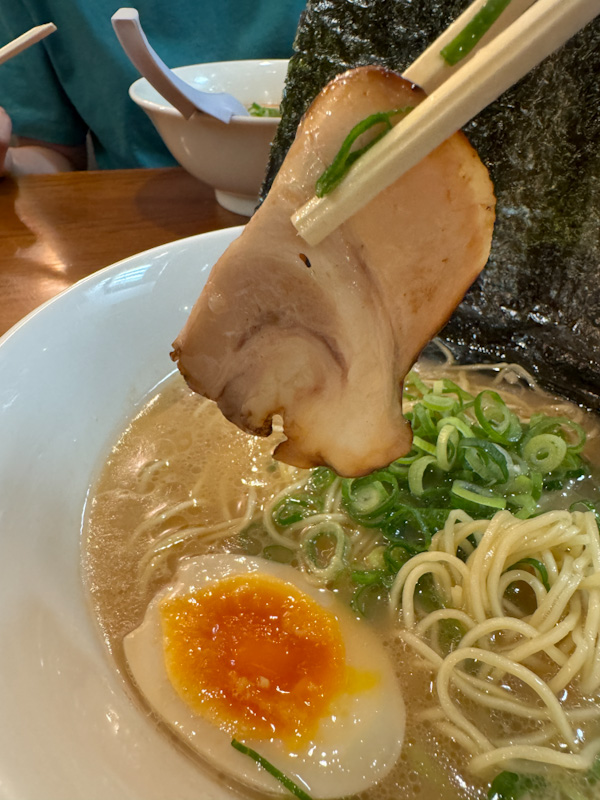
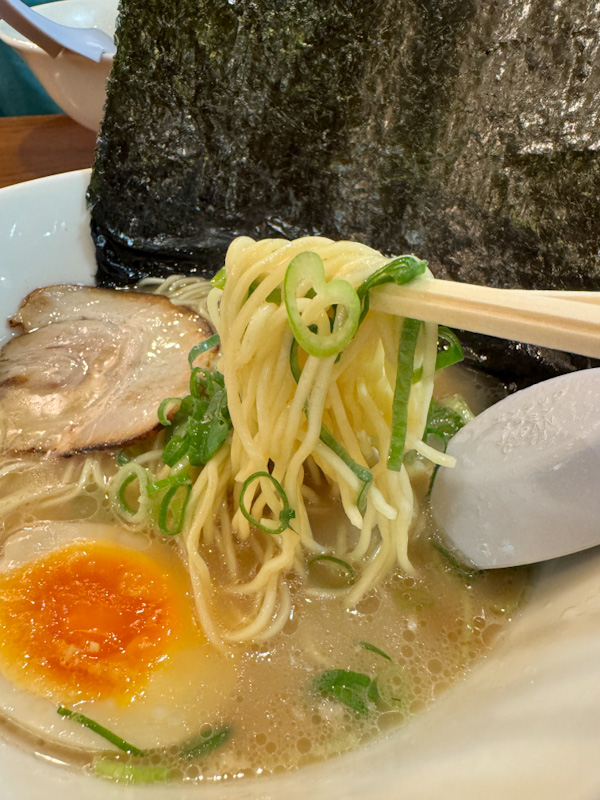
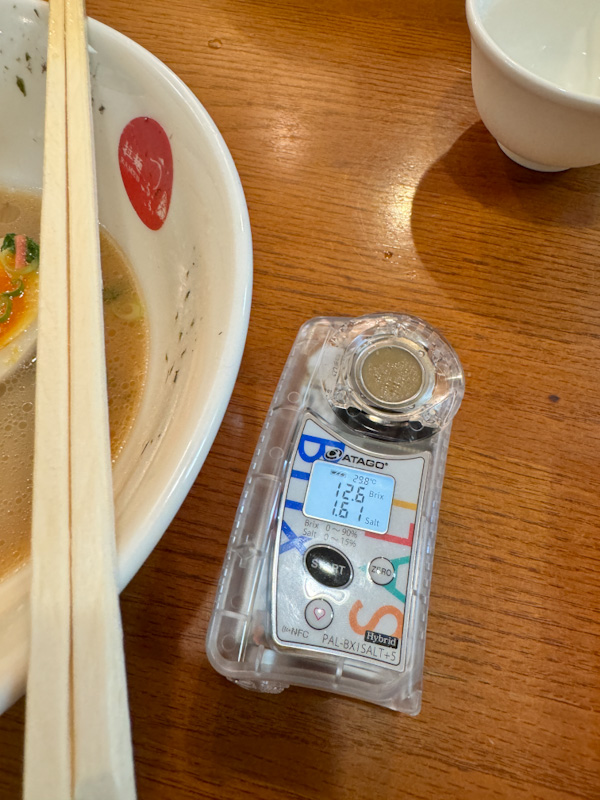
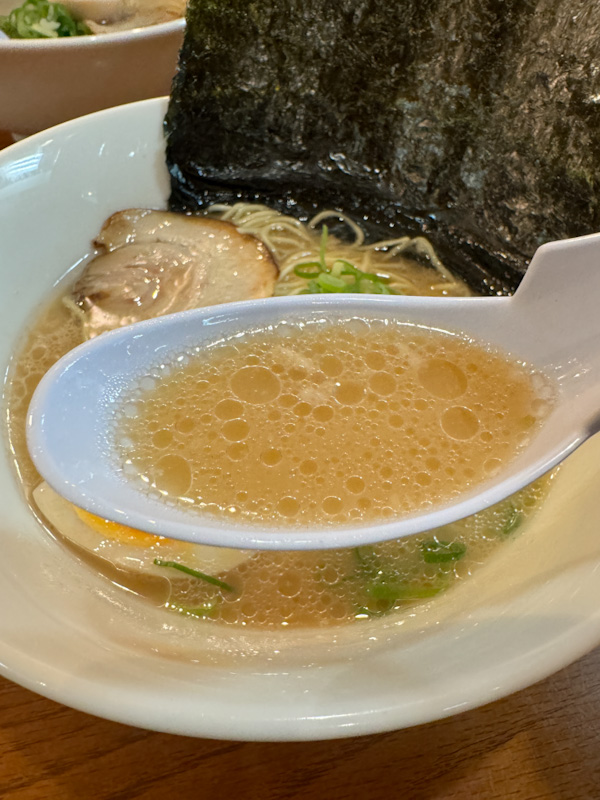
Saga Ariake Ramen: 75/100
Noodle: 25/35
When ordering, you can choose your noodle hardness on a 1 to 5 scale from softest to hardest. We ordered hard noodles for this meal, and they were served a little harder than al dente. The noodles are medium thin, straight, and dense. They are firm, have a strong bite, and a nice wheat taste. However, the bite is not springy or snappy enough, and the noodles seem a bit salty on their own.
Soup: 25/35
The soup is a thick and rich Tonkotsu with an opaque consistency and a creamy texture. However, it’s a bit too oily, with a significant layer of shiny oil on top. The soup has a nice savory body, a subtle meatiness from the pork, and lingering undertones of Shoyu. The Shoyu taste and saltiness seem a little too strong, building up on your palate and potentially overwhelming your tongue. The soup has a high brix reading, indicating richness, but also a marginally higher-than-usual salt reading. The ramen has the potential to be amazing, but it could be more balanced by reducing the amount of Tare, making it less salty and allowing the base broth to shine.
Meat: 15/20
The chashu is a paper-thin slice of meat. Initially, the peculiar thinness seemed like a way to make the ramen more affordable, but it actually enhances the texture, making it soft and tender with the right amount of chewiness. The marination is well done, retaining enough pork taste without being overly meaty. It’s salty enough without overwhelming the other elements of the ramen and has a subtle, light sweet undertone.
Topping: 10/10
The ramen comes with classic Tonkotsu toppings such as spring onions and marinated egg. The egg has strong marination with a pronounced but not overwhelming mirin taste. There’s also pickled ginger on the side for those who like it. The “Ariake” version includes an extra piece of seaweed, famous in this region for its umami-rich flavor and melt-in-your-mouth texture. The seaweed disintegrates in the hot soup, adding a nice layer of umami to the overall meal.
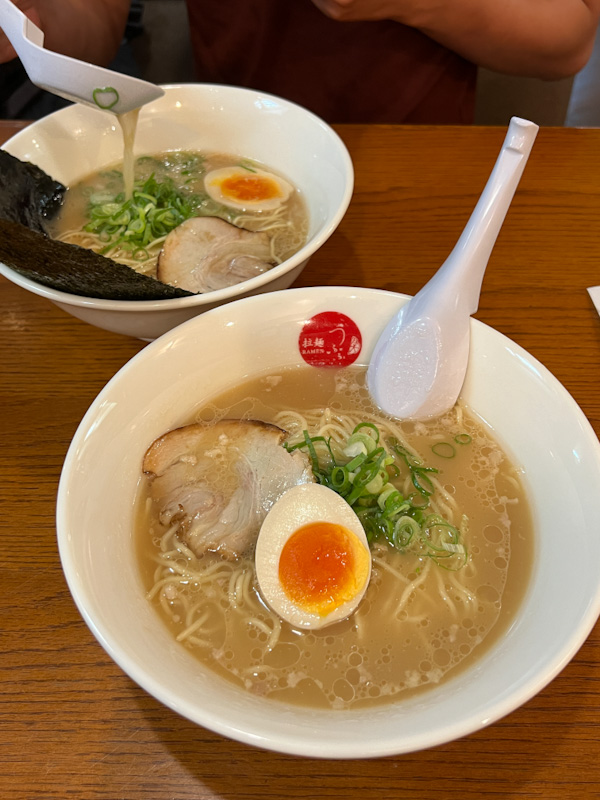
White Tonkotsu Ramen: 70/100
Noodle: 25/35
When ordering, you can choose your noodle hardness on a 1 to 5 scale from softest to hardest. We ordered soft noodles for this meal, and they were served looking a little more bloated but not to the point of being soggy. The bite is mildly springy with a nice wheat taste. However, the noodles seem a bit salty on their own.
Soup: 25/35
The same soup is used here for the White Tonkotsu version. The soup is thick and rich Tonkotsu with an opaque consistency and creamy texture. However, it’s a bit too oily, with a significant layer of shiny oil on top. The soup has a nice savory body, subtle pork meatiness, and lingering undertones of Shoyu. The Shoyu taste and saltiness seem a little too strong, building up on your palate and potentially overwhelming your tongue. The soup has a high brix reading, indicating richness, but also a marginally higher-than-usual salt reading. The ramen has the potential to be amazing but could be more balanced by reducing the amount of Tare, making it less salty and allowing the base broth to shine.
Meat: 15/20
The same chashu is used here. The chashu is a paper-thin slice of meat. Initially, the peculiar thinness seemed like a way to make the ramen more affordable, but it actually enhances the texture, making it soft and tender with the right amount of chewiness. The marination is well done, retaining enough pork taste without being overly meaty. It’s salty enough without overwhelming the other elements of the ramen and has a subtle, light sweet undertone.
Topping: 5/10
The toppings are the same, except without the seaweed from the Ariake version. The ramen comes with classic Tonkotsu toppings such as spring onions and marinated egg. The egg has strong marination with a pronounced but not overwhelming mirin taste. There’s also pickled ginger on the side for those who like it.
DISCLAIMER
One man’s meat is another man’s poison.
Find out more about our palettes and how we evaluate our ramen here. 😉

